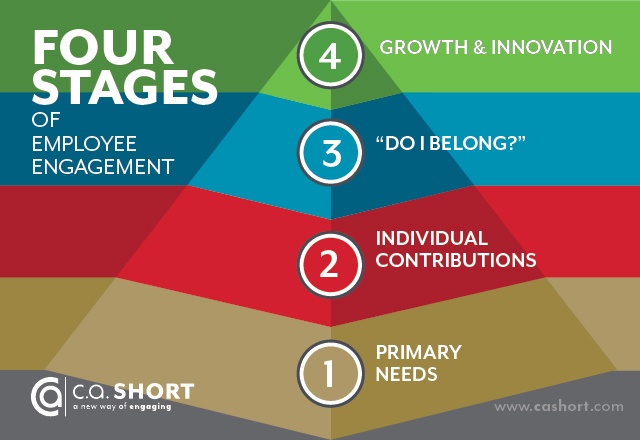Recognition remains an important aspect in the success of workplace culture. An employee’s engagement can change drastically with the inclusion of recognition, making it a valuable skill to utilize in any company, organization, or business. Hospitals and clinics—the healthcare industry in general—share no exception to the importance of recognition, as it can contribute to the betterment of both employee and patient health and livelihood.
The healthcare industry is an environment where hard working individuals are needed. Through shared routines and responsibilities, these individuals work through a number of various job functions. It doesn’t matter if it’s a nurse, physician, or administrative staff—all healthcare workers have to work with one another to improve patient experience. Unfortunately, according to HIT Consultant, the result of high turnover rates and heavy competition for top candidates has stunted the attraction of the healthcare system, resulting in a loss of valuable employees. Consequently, some healthcare workers perform subpar in their duties, effectively lowering The Hospital Consumer Assessment of Healthcare Providers and Systems survey, or HCAHPS scores.
Ensuring that healthcare workers are properly engaged in their environment is essential to bettering not only the worker's experience, but that of the patient’s as well. HIT states, “employee engagement has many standards, and one opportunity often overlooked by healthcare organizations is employee recognition” (HIT).
What Exactly is Employee Recognition?
Employee recognition refers to a company’s response to the contributions that an employee makes towards the business. It’s a way of acknowledging an employee's hard work, and fully appreciating all that they do for the company. Specific things to look out for when recognizing an employee include (but not limited to) achievements, desired behaviors, and milestones.
Considering the intensity of healthcare professions, it’s important to consider what can be done to engage the community at hand. With this engagement comes a slew of benefits—one of which is exceedingly important for the success of the organization: HCAHPS scores.
What are HCAHPS Scores?
The Hospital Consumer Assessment of Healthcare Providers and Systems survey, otherwise known as HCAHPS, is a tool that measures patient satisfaction through the use of 27 survey questions that ask patients about the quality of care they receive. These questions include anything from sanitation levels in the hospital environment to management of medication and transitions from hospital to home care. Essentially, HCAHPS acts as a gauge, one that determines a healthcare employee’s success and effectiveness in caring for their patient/s.
Why Prioritize Recognition?
- The Healthcare System Facilitates Burnout
- Burnout is no new concept to healthcare workers. This became especially apparent during the height of COVID-19, with burnout becoming more of an expected development rather than a preventable one. But a 2016 study by the ECRI Institute found that burnout has been an issue in the lives of healthcare workers long before the beginning of the pandemic.
Employee recognition is a simple, yet effective solution to lessen the effects of burnout. The power of recognition may seem far-fetched (how could it be so simple?), but recognition results in employees feeling seen and appreciated for their work, which in turn helps them feel more comfortable in their healthcare environment and lessens the inclination to work unnecessary hours or choose not to take time off.
- Burnout is no new concept to healthcare workers. This became especially apparent during the height of COVID-19, with burnout becoming more of an expected development rather than a preventable one. But a 2016 study by the ECRI Institute found that burnout has been an issue in the lives of healthcare workers long before the beginning of the pandemic.
- Engaged Employees = Higher Retention Rates
- The issue of turnover in the healthcare system has disastrous effects on both the organization and the coworkers they employ. When a healthcare worker leaves, fellow coworkers have to endure new problems: saying goodbye, covering shifts, and training new hires.
In a study conducted by Harvard Business Review, it was found that just 17% of the highly engaged hospital workers were interested in other employment options versus 43% of the disengaged group. Companies that have successfully developed work cultures of recognition have 38% less turnover than those that don’t. Furthermore, a study was conducted on a small hospital by Gallup in 2010, in which employee engagement was sought to be increased. By the end of the study it was revealed that the overall hospital turnover rate of 22% in 2010 fell to just 15% in 2013.
- The issue of turnover in the healthcare system has disastrous effects on both the organization and the coworkers they employ. When a healthcare worker leaves, fellow coworkers have to endure new problems: saying goodbye, covering shifts, and training new hires.
- Better Employee and Patient Safety
- Wellbeing of employees and patients remains one of the most essential qualities in the healthcare industry. The inclusion of over-the-top safety ensures effective quality control in a patient’s stay/visit, helps employees feel comfortable in their work environment, and motivates workers to go the extra mile in providing care for their patients.
According to Gallup’s study, it was found that employee engagement in a healthcare setting directly impacts the amount of accidents that occur on the job. Engaged employees adhere closely to safety protocols, which in turn decreases risk of further injuries and/or accidents. In fact, the study saw a 15% increase in patient safety, simply due to the employees feeling truly engaged in their healthcare environment.
- Wellbeing of employees and patients remains one of the most essential qualities in the healthcare industry. The inclusion of over-the-top safety ensures effective quality control in a patient’s stay/visit, helps employees feel comfortable in their work environment, and motivates workers to go the extra mile in providing care for their patients.
- Fewer Patient Deaths
- With the lives of so many in the hands of nurses and healthcare professionals, it is exceedingly important to take employee engagement seriously as it can make a difference in the fate of one’s life.
In yet another section of Gallup’s study, it was uncovered that hospital’s across the country had nurse engagement as the No. 1 predictor of death. Disengaged faculty have little-to-no drive in their duties, which causes poor performance in the quality of care that patients receive. Lack of care results in a decrease of mental and physical health; an instant determining factor in the health recovery of patients.
- With the lives of so many in the hands of nurses and healthcare professionals, it is exceedingly important to take employee engagement seriously as it can make a difference in the fate of one’s life.
- Increased Employee Satisfaction
- Recognition undoubtedly improves the rate of satisfaction in the work-lives of healthcare employees. It just feels good to be admired—even briefly—for the work that is getting done and getting done well. In a study of Bank of America, it was found that recognition greatly influenced employee satisfaction with an increase from 58% to 85% in just a 5-year span. People enjoy feeling appreciated. When they are, it causes a shift in perspective; “I am a valued employee and these people care for me.”
- Recognition undoubtedly improves the rate of satisfaction in the work-lives of healthcare employees. It just feels good to be admired—even briefly—for the work that is getting done and getting done well. In a study of Bank of America, it was found that recognition greatly influenced employee satisfaction with an increase from 58% to 85% in just a 5-year span. People enjoy feeling appreciated. When they are, it causes a shift in perspective; “I am a valued employee and these people care for me.”
- HR Administrators Greatly Benefit
- Healthcare employees working directly with patients are not the only job type that benefit from recognition treatment. According to a LinkedIn article, “at least 90% of HR professionals believe recognition and reward influence employees to stay in their jobs." Recognition results in an easier job for HR administration; employees are happier, built-in cost controls improve accountability, and the organization is far more transparent with employees. A successful implementation of recognition helps HR excel at their job by spending less time managing unhappy employees and dealing with turnover, which aids them in assisting the healthcare organization to the best of their abilities.
Increasing HCAHPS Scores Through Recognition
Prioritizing recognition in healthcare (and anywhere else for that matter) results in fantastic success for organizations as a whole, with virtually no drawbacks to the process. The benefits of recognition are already feasible rewards to an organization, but it’s these collective rewards that culminate into one massive jackpot: increased HCAHPS scores. Many of the points in the previous section directly influence the outcome of these scores. Better patient safety results in higher patient satisfaction, which directly impacts HCAHPS scores for the better. Remember that increased HCAHPS cannot be earned without better employee and patient safety, and this increased safety is not possible without proper recognition implementation. But the benefits of recognition don’t stop there. When high HCAHPS scores are obtained in a hospital through high engagement, there is a second recurring effect on the organization and its employees. This second effect sees an even further increase in performance as the ratings incentivize employees to continue an above-and-beyond approach. This results in a more efficient, operational, and better healthcare organization. Furthermore, HBR found that organizations with those improved HCAHPS scores in patient experience and employee engagement saw the average patients’ global ratings improve as well. Win-win.
Conclusion
Employee recognition is a powerful tool. Healthcare companies and organizations should take note of such an addition, as recognition can provide an upper hand in the competitive business environment.
Increasing HCAHPS scores, creating efficient employees, and ensuring unparalleled quality care to patients are just some of the many benefits that recognition provides. Without it, the healthcare system would remain stagnant in service.
Employee recognition is the improvement that organizations are looking for, and a testament to what can be accomplished when employees are appreciated for their hard work. Simply put, recognition creates results.
To witness the transformative power of employee recognition firsthand and unlock its full potential, consider scheduling a demo of our cutting-edge employee recognition and engagement platform today. Experience how appreciating your team's hard work can translate into measurable and impactful results.


.png?width=70&name=Untitled%20design%20(11).png)


.jpg)



SHARE